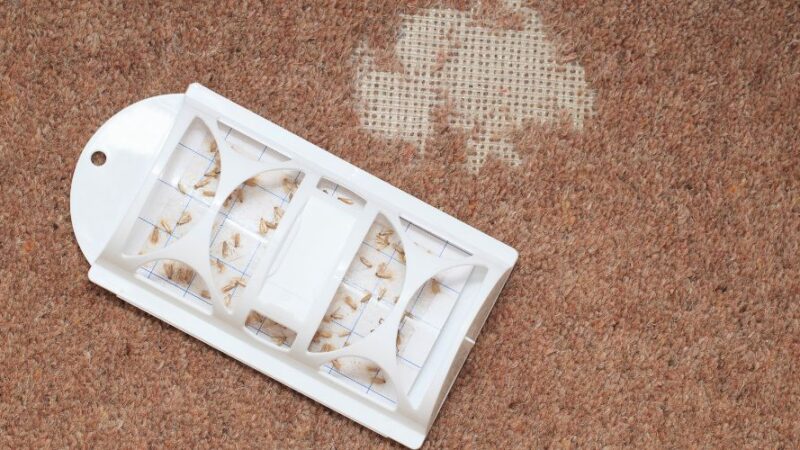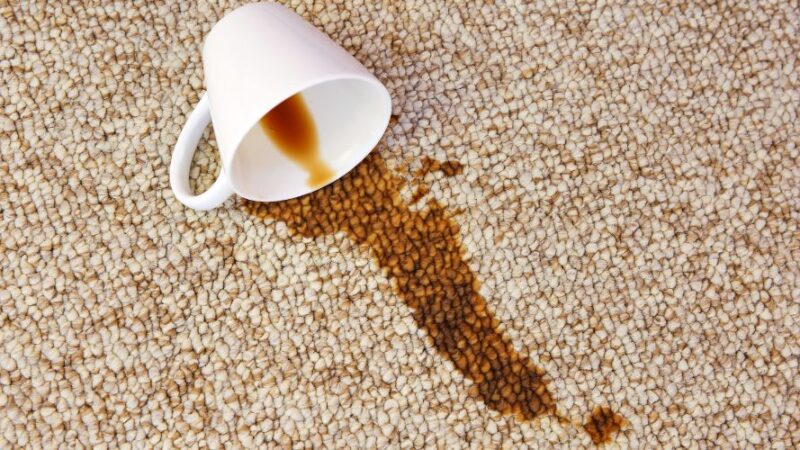Essential List of Plumbing Tools – 2024 Update
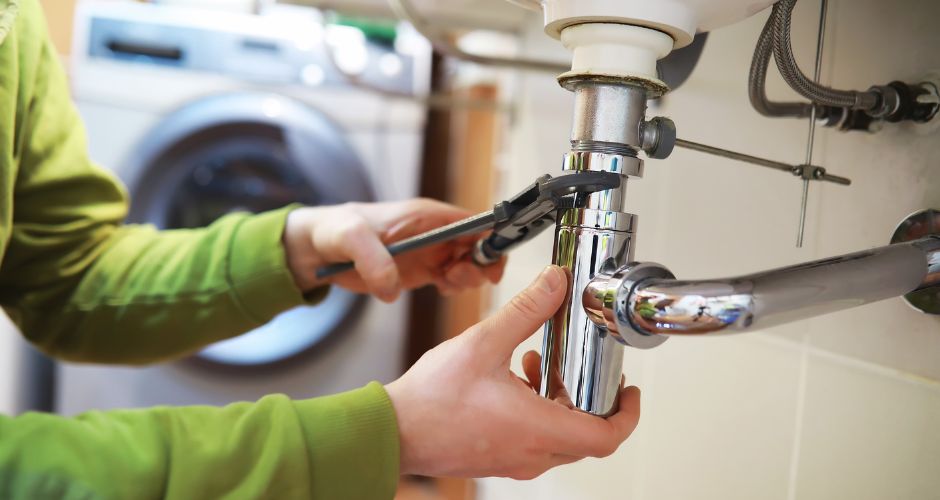
In-home maintenance and having the right tools can be the difference between a successful DIY plumbing project and a potential disaster. Whether fixing a leaky faucet, installing a new pipe, or tackling a clogged drain, a well-equipped toolbox is essential.
In this blog, we’ll explore the essential list of plumbing tools every DIY enthusiast should have. Not only will you learn about these tools, but we’ll also provide valuable tips on proper tool maintenance and storage.
What Are Plumbing Tools?
Plumbing tools are specialized instruments and equipment designed for use in various plumbing tasks, including the installation, repair, and maintenance of plumbing systems. These tools are essential for professional plumbers and DIY enthusiasts working on plumbing projects within homes, buildings, or other infrastructure.
Plumbing tools are diverse, ranging from basic hand tools to more specialized equipment, each serving a unique purpose in the plumbing trade.
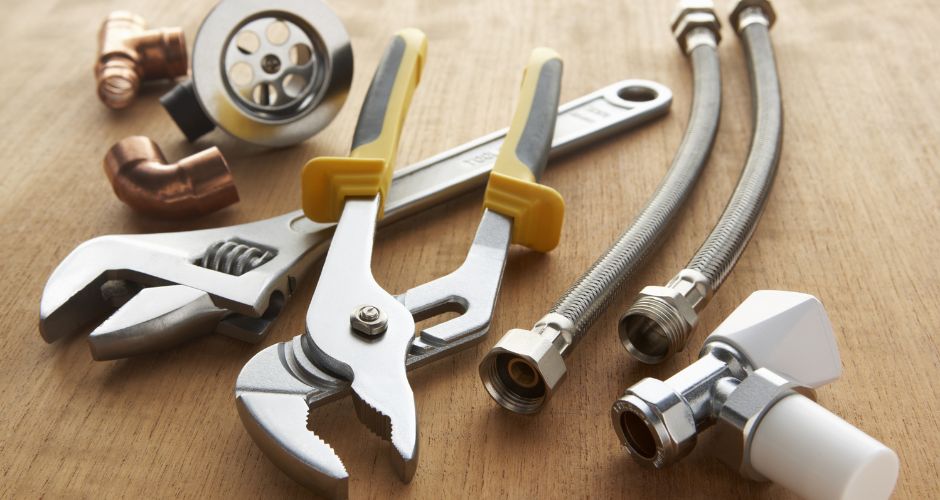
Basic Hand Tools
Basic hand tools are essential for various household and DIY tasks. These tools are versatile, easy to use, and invaluable for various projects. Here is a list of some common basic hand tools:
| Tool | Description |
| Screwdrivers | Used for turning screws and fasteners; available in flathead and Phillips head types. |
| Hammer | Used for driving in and removing nails, as well as framing and demolition tasks. |
| Pliers | Come in different types, like slip-joint and needle-nose; used for gripping, bending, and cutting wires. |
| Adjustable Wrench | Also known as a crescent wrench; can be adjusted to fit various nut and bolt sizes. |
| Utility Knife | Used for cutting various materials, including cardboard, drywall, and packaging. |
| Hacksaw | Used for cutting metal pipes, rods, and other materials; features fine-toothed blades for precision. |
| Chisels | Come in various sizes and are used for carving, cutting, and shaping wood or metal. |
| Mallet | A softer-faced hammer used for tasks requiring a gentler touch, like woodworking and furniture assembly. |
| Wrench Set | Includes open-end and box-end wrenches; essential for tightening or loosening nuts and bolts. |
| Saw | Used for cutting wood; comes in various types, such as crosscut saws, rip saws, and coping saws. |
| Sanding Block | Used in conjunction with sandpaper for smoothing surfaces and removing rough edges. |
| Claw Hammer | Features a curved, forked end for removing nails and is versatile for various tasks. |
| Wire Brushes | Used for cleaning and rust removal; available in steel and brass bristle varieties. |
| Awl | A pointed tool used for marking and starting holes in materials like wood or leather. |
| Screwdriver Set | A set of different screwdrivers, including precision and specialty types for various screw-related tasks. |
| Putty Knife | Used for applying and smoothing putty, spackling, and other materials. |
| Hex Keys (Allen Wrenches) | For tightening or loosening hexagonal socket screws, bolts, or fittings. |
| Nut Drivers | Used for turning nuts and bolts, commonly found in electrical and automotive work. |
Measuring and Marking Tools
Measuring and marking tools are essential instruments used in various trades and DIY projects to ensure precision and accuracy when cutting, assembling, or installing materials. These tools help ensure that dimensions are correct and materials are positioned accurately. Here are some common measuring and marking tools:
| Tool | Description |
| Tape Measure | A flexible, retractable tool used to measure lengths accurately. Available in various lengths, typically in both metric and imperial units. |
| Carpenter’s Square | Also known as a framing or try square, it’s an L-shaped tool with a right-angle edge used for marking and checking right angles in carpentry and woodworking. |
| Level | A tool with a bubble or spirit vial used to determine if a surface is horizontal (level) or vertical (plumb). Available in different sizes. |
| Straight Edge | A straight, flat tool, often made of metal or plastic, used for drawing or checking straight lines. Commonly used in construction. |
| Combination Square | A versatile tool with a ruler and interchangeable heads, including a square head for right angles and a protractor head for angles. Useful for layout work and checking measurements. |
| Calipers | Precision measuring tools for inside, outside, and depth measurements. Often used in metalworking and machining. |
| Compass | A tool used for drawing circles and arcs. Some compasses have a built-in adjustment for different radius sizes. |
| Marking Gauge | A tool used in woodworking to mark lines parallel to the edge of a board, ensuring consistent measurements. |
| Chalk Line | A tool used for creating straight lines on surfaces, primarily in construction. It consists of a retractable string coated in colored chalk. |
| Depth Gauge | A tool used to measure the depth of holes or recesses. Commonly used in metalworking and woodworking. |
| Feeler Gauge | A tool with a set of blades of varying thickness, used to measure the gap or clearance between two objects. Common in automotive maintenance. |
| Vernier Caliper | A precise measuring tool used for accurate linear measurements, with a sliding scale and jaws for inside, outside, and depth measurements. |
| Protractor | A tool used for measuring angles, often with a semicircular or full-circle design. Common in geometry and construction. |
| Radius Gauge | A tool used to measure the radius of curves or circles. Important in various design and engineering fields. |
| Thread Pitch Gauge | Used to measure the pitch or distance between threads on screws, bolts, and nuts. Essential for matching threads. |
Tools for Pipe Joining
Pipe joining is a crucial aspect of plumbing and various other applications. There are several tools designed to facilitate the process of connecting pipes securely. Here’s a list of common tools for pipe joining:
| Tool | Description |
| Pipe Wrenches | Pipe wrenches come in various sizes and are essential for gripping and turning pipes. They have adjustable jaws that provide a strong grip, making them suitable for tightening and loosening threaded pipes. |
| Pipe Cutters | Pipe cutters are specialized tools designed to cut pipes cleanly and precisely. There are various types, including tubing cutters, ratcheting cutters, and hacksaw-style cutters, each suited to different pipe materials and sizes. |
| Thread Sealant Tape | Thread sealant tape, often referred to as “Teflon tape,” is used to create a watertight seal on threaded pipe connections. It’s wrapped around the threads to prevent leaks. |
| Pipe Threader | A pipe threader is a heavy-duty tool used to create threads on the ends of pipes. It’s commonly used when custom pipe lengths are needed or for repairing damaged threads. |
| Pipe Fitting Brush | A pipe fitting brush, also known as a fitting brush or deburring tool, is used to remove burrs and sharp edges from the inside and outside of pipes after cutting. This ensures a smooth fit and helps prevent leaks. |
| Pipe Soldering Torch | For copper and metal pipes, a pipe soldering torch is used in conjunction with solder and flux to create a leak-free, permanent connection through soldering. It’s essential for sweating copper pipes. |
| Pipe Fitting Connectors | Various pipe fitting connectors, such as couplings, unions, elbows, and tees, are used to join pipes in specific configurations. These connectors come in different materials and sizes to match the pipes being joined. |
| Pipe Crimpers | Crimpers are used in PEX (cross-linked polyethylene) plumbing systems to create watertight connections without the need for soldering or gluing. They work by compressing metal rings (crimp rings) over the pipe and fitting. |
| Flaring Tool | Flaring tools are used in copper and brass pipe systems to create flared ends on pipes. These flared ends are then connected to fittings for a secure, leak-resistant joint. |
| Pipe Clamps | Pipe clamps are used to secure pipes in position, especially when making threaded connections. They come in various styles, including adjustable clamps and rigid clamps, to accommodate different pipe sizes and materials. |
| Pipe Joint Compound | Pipe joint compound, or pipe dope, is a sealant used on threaded pipe connections to prevent leaks. It is applied to the threads before assembly. |
Drain Cleaning Tools
When it comes to maintaining and repairing plumbing systems, having the right tools is crucial. Drain cleaning is a common plumbing task that often requires specific tools to effectively remove clogs and debris from drains and pipes. Here are some essential drain cleaning tools:
| Tool | Description |
| Plunger | A plunger is a basic yet effective tool for clearing minor drain clogs. There are two main types of plungers: a cup plunger, which is used for sinks and tubs, and a flange plunger, which is designed for toilets. Plungers work by creating a seal and using suction to dislodge blockages. |
| Drain Snake (Auger) | A drain snake, also known as a plumbing auger, is a flexible cable with an auger or corkscrew-like attachment at one end. It’s used to reach deep into drains and pipes to break up or retrieve blockages. There are handheld and power augers available for various drain sizes. |
| Zip-It Tool | The Zip-It tool is a simple and inexpensive device used for clearing hair and debris from bathroom sink and shower drains. It has a barbed length of plastic that can be inserted into the drain and then pulled back to remove clogs. |
| Drain Cleaning Chemicals | While not a physical tool, drain cleaning chemicals can be used to dissolve minor clogs caused by organic matter or soap scum. It’s important to use these chemicals with caution and follow the manufacturer’s instructions. |
| Toilet Auger | A toilet auger, also called a closet auger, is designed specifically for clearing clogs in toilets. It has a long, flexible cable with a rubber sleeve to protect the porcelain. Toilet augers are handy for dislodging blockages in the curved trap of the toilet. |
| Drain Cleaning Bladder | A drain cleaning bladder is an attachment that can be connected to a garden hose and inserted into a clogged drain. When the water is turned on, the bladder inflates, creating pressure to push through and remove the clog. |
| Drain Brush | Drain brushes are used to clean the inside of drains and pipes. They have bristles that can scrub away debris and buildup from pipe walls. |
| Wet/Dry Vacuum | A wet/dry vacuum, also known as a shop vac, can be used to remove standing water from clogged drains before attempting to clear the blockage. This can make the process cleaner and more efficient. |
| Hydro Jetters | Hydro jetters are high-pressure water jetting machines used by professionals to clear stubborn and deep-seated drain clogs. They can remove tree roots, mineral deposits, and grease buildup effectively. |
Tips for Proper Tool Maintenance and Storage
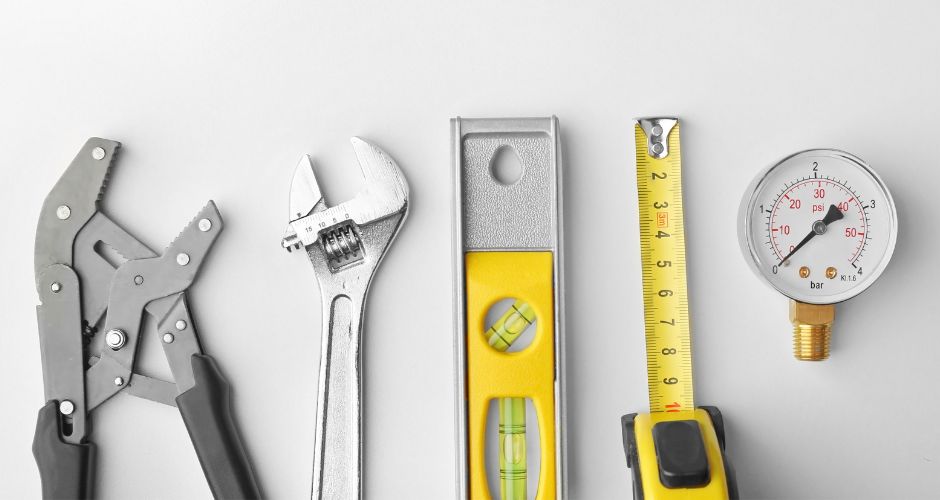
Proper tool maintenance and storage are essential to keep your tools in good working condition, extend their lifespan, and ensure safety. Here are some tips on how to maintain and store your tools effectively:
Tool Maintenance:
- Clean Your Tools: After each use, clean your tools to remove dirt, debris, and any residues. Use a wire brush, rag, or solvent appropriate for the tool and the materials it came into contact with.
- Lubricate Moving Parts: Apply lubricating oil to moving parts of your tools, such as hinges, joints, and gears. This prevents rust and ensures smooth operation.
- Sharpen Blades: Keep cutting tools, like saws and chisels, sharp. Regularly inspect blades for dullness and sharpen them using the appropriate sharpening tools.
- Replace Worn or Damaged Parts: If you notice worn-out or damaged parts, such as handles or grips, replace them promptly to maintain the tool’s integrity and safety.
- Keep Tools Dry: Moisture can cause rust and damage to your tools. Store them in a dry place and wipe them dry before storage.
- Store Tools Clean: Store cleaned and dry tools to prevent dirt or rust from spreading to other tools.
Tool Storage:
- Proper Organization: Organize your tools in a way that makes them easily accessible. You can use pegboards, wall-mounted tool racks, or tool chests with drawers to keep everything orderly.
- Toolboxes: A toolbox is an excellent option for storing a small set of essential tools. It keeps them protected and easily transportable.
- Tool Bags: For tools that you use frequently or need to carry to different locations, a tool bag with multiple pockets is a convenient choice.
- Tool Cabinets: Tool cabinets or chests with drawers provide ample storage and are suitable for larger tool collections. They help keep your tools organized and protected.
- Protective Cases: For specialized or delicate tools, use protective cases or foam inserts to keep them safe and secure.
- Labeling: Label your tool storage areas to make it easier to find specific tools quickly. This is especially useful if you have an extensive tool collection.
- Climate Control: Store tools in a temperature-controlled environment to prevent damage from extreme heat, cold, or humidity.
- Security: If you have valuable tools, invest in a locking cabinet or toolbox to prevent theft.
- Regular Inspection: Periodically check your tools in storage to ensure they remain in good condition and are free from rust or damage.
- Wall Mounting: Consider wall-mounted storage solutions if you have limited floor space. Wall panels, pegboards, and wall-mounted shelves can save space and keep tools accessible.
With this comprehensive list of essential plumbing tools, you’re ready to tackle a wide range of DIY plumbing projects. Armed with the right tools and safety gear, you can save money and enjoy the satisfaction of accomplishing plumbing tasks on your own. Just remember to maintain your tools properly so they’re always in top shape when you need them. Happy plumbing!


